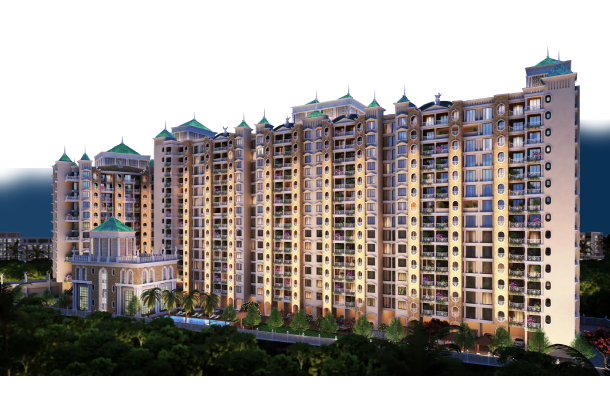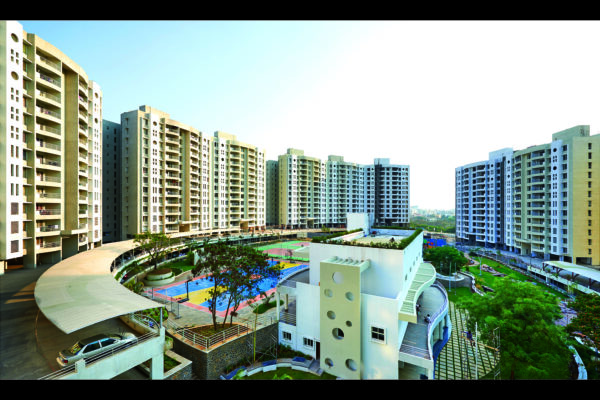by Dhiren Tharwani, Director, Tharwani Realty
Over the last few years, a low-key yet strong transformation has been underway in India's urban real estate scene. The young generation, once notorious as renters forever, is now walking into the homeownership space with confidence. Across metros and rising cities, young Indians are remodeling wealth creation, investment, and life itself via real estate. A look at what's transforming this and shaping up the future of urban life in India below.
What is fueling the transition from renting to owning for India's urban youth in 2025?
A combination of increasing rent, a culture of working from home, and better availability of home loans is compelling young Indians to reconsider where they live. Rental prices in large cities such as Mumbai, Bengaluru, and Pune have increased substantially over the past year. Most young professionals are now recognizing that paying a home loan EMI isn't such a different proposition from paying rent, except for the fact that they'll be the owners of the house. Added to that, job flexibility and the ability to work from anywhere have allowed them to contemplate buying in newer and affordable areas, even in tier 2 and 3 cities. Millennials and Gen Z also have a greater perception of financial independence. They are eager to create long-term wealth, and real estate seems more secure in comparison to risky investments. Developers are also becoming younger and friendlier, providing flexible payment schemes and tech-enhanced property search options that simplify the buying process.
What is the changing demand for luxury homes among young Indian homebuyers?
Luxury isn't just about cost – it's about value, lifestyle, and experience. Younger buyers aren't necessarily interested in big houses with big interiors. They're interested in nicely designed homes in desirable locations, with extras that fit their contemporary lifestyles. And these extras include such things as co-working areas, fitness rooms, roof decks, smart home technology, and green building techniques. There's also increased demand for branded residences and gated communities that provide security, sophistication, and prestige. There's a new trend recently that even customers in their late 20s are going out of their way to spend more on houses that provide convenience and comfort. For most, it's not about waiting until their 40s to upgrade – it's about starting well and living well from the very beginning.
What is the position of affordability in the urban youth's trajectory for ownership?
Affordability remains a consideration, particularly for first-time buyers. Interest rates may have ticked up marginally, but they remain within manageable levels, which is prompting younger generations to consider ownership. Several builders have begun introducing small 1 and 2 BHKs designed specifically for urban youth, priced in alignment with the mean salaried class incomes. Government initiatives for first-timers and lowered stamp duty in certain states have been helpful too. Sites that enable buyers to compare home loans, see their credit scores, and compute EMIs are also reducing the financial aspects of buying a house from something scary to something more manageable. Individuals are better educated than ever before, and they're utilizing that to make intelligent, long-term decisions rather than remaining stuck within the rental cycle.
How are co-living and rental models adapting to the changing preferences of urban youth?
Even while many young Indians prefer to buy, rental and co-living aren't disappearing – they're simply changing. In the past, co-living was largely a fix for students or early-career professionals. Today, it's all about community, convenience, and flexibility. Operators are elevating their product with private studios, fast internet, shared kitchens, fitness areas, and even events that foster camaraderie. For would-be owners who cannot or will not yet commit to ownership, these rental properties provide a sensible alternative. They are a no-fuss living arrangement with included utilities and services, many times with leases as brief as three months. A few developers are also testing rent-to-own schemes, wherein a portion of the rent is put toward eventual ownership, merging flexibility with the potential for wealth building.
What wider trends are influencing the future of real estate investment for India's urban youth?
One of the large trends is the philosophical change from having one lifetime residence to keeping real estate as an investment portfolio. Young adults now are willing to own houses in other cities, not necessarily to reside in, but to rent or sell down the line. The emergence of fractional ownership sites is also offering youngsters the ability to invest in commercial units or vacation homes without requiring huge amounts of capital. Sustainability is also the key driver. Green living, energy-saving homes, and green buildings are more attractive to this generation. Most also aspire to be near nature yet close enough to the city, hence, suburbs and peri-urban sites are becoming popular. Technology has facilitated the entire process. From online site visits to AI-driven property recommendations, millennial buyers are leveraging technology at each stage. They track realty influencers, view social media reviews, and depend considerably on word of mouth. Home buying for them is not merely an economic decision—it's a lifestyle choice informed by facts and principles.
Post Views: 1,561
















